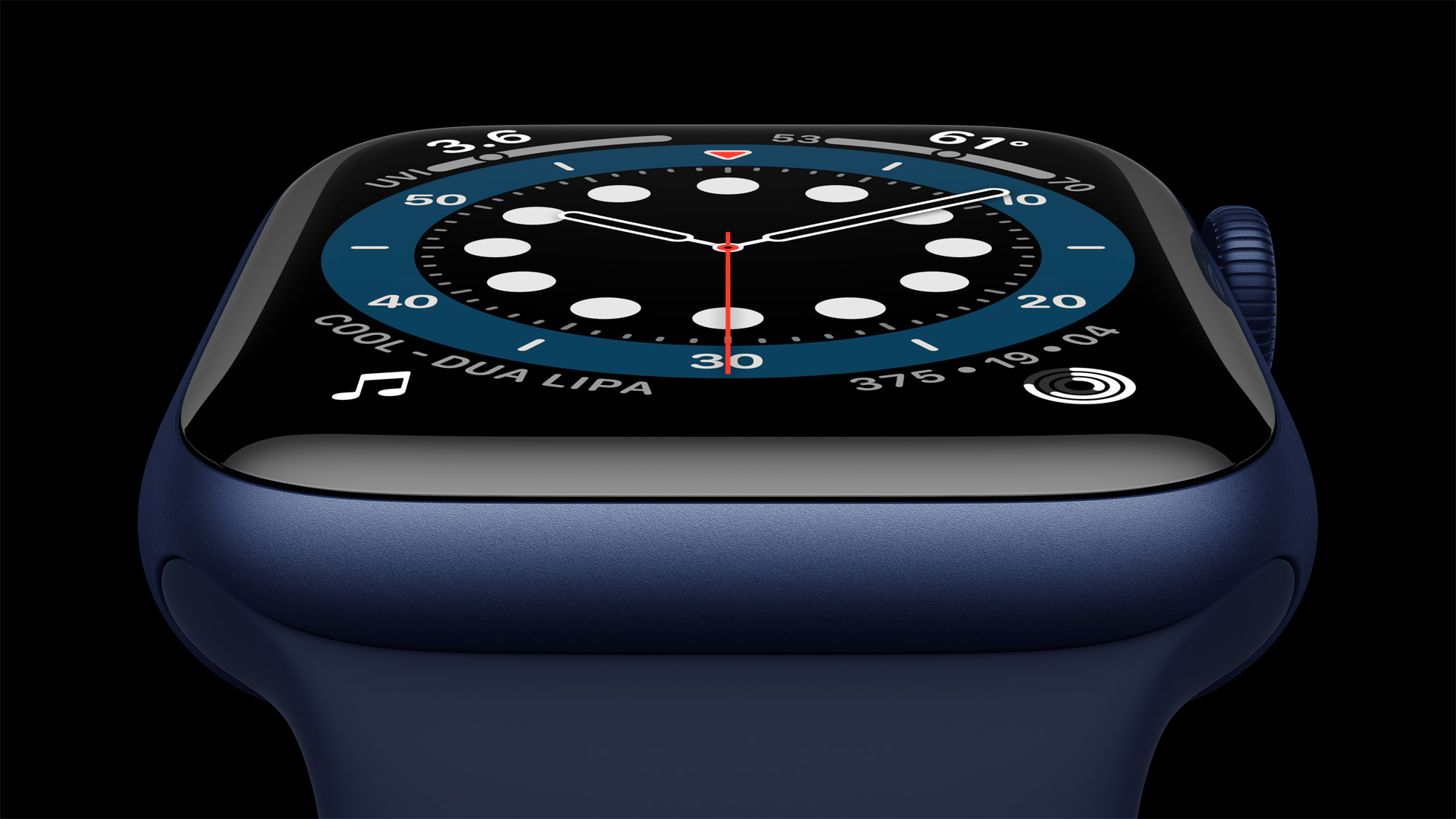The Apple Watch 7 upgrade I really want to see? A micro-OLED display
The next-gen display type would take the Apple Watch's screen beyond looking digital


We're expecting to see the Apple Watch Series 7 appear later this month, likely alongside the iPhone 13 and AirPods 3 at a big Apple event. The headline news this year appears to be the biggest redesign of the Watch so far, switching to flatter sides and top, with a slightly larger screen as a bonus.
I'm sure there will also be some health upgrades and internal changes too (and more battery life would be nice) – we'll see what Apple has in store soon.
There's actually very little that I'm desperate for Apple to add to the Watch. I'd like better sleep tracking, as I mentioned in my Apple Watch Series 6 review, but it's so good and so capable now overall.
So given that's the case, I got to thinking about what my dream upgrade for a future Watch would be (within the real world, no science fiction), and I'd love to see Apple include a micro-OLED display, instead of the regular OLED screen used now. Micro-OLED tech is rolling towards production this year from a company named INT Tech (via OLED-info.net), initially aimed at screens 0.7 inches in size.
Why do I want this? Well, for anyone reading who's as geeky as me, the following specs speak for themselves: imagine a watch screen with a brightness up to 5,000 nits, and a display density of 3,000 pixels per inch.
For everyone else: the brightness (measured in 'nits', alarmingly) of the current Apple Watch is 1,000 nits, so these display can be up to five times as bright, making them visible in even the most dazzling of sunlight. Now, actually, going anywhere near 5,000 nits seems wildly unnecessary. 1,500 would probably do for maximum visibility; 2,000 if you're feeling fruity. Which is great, since it means we don't need to use as much power on the screen!
You'll never see the seams
As for the pixel density – most screens today on phones and smartwatches are 300-500 pixels per inch, because beyond 300ppi the eye has trouble seeing the distinction between them at normal viewing distances. But there are still times when shapes on screen might interact weirdly with the edges of the pixels, and make whatever's on-screen look like it's made of tiny squares, rather than being something 'real'. But at 3,000 pixels per inch, you could can tape the watch to your eye and still never see where one pixel ends and another begins. (The big expected mainstream use of micro-OLED will be virtual reality and augmented reality headsets, where it practically will be taped to your eye, which is why it's so high-res).
Get all the latest news, reviews, deals and buying guides on gorgeous tech, home and active products from the T3 experts
The one area I still have a gripe with the Watch is the digital watch faces, which I think still don't take advantage of the theoretically infinite variety that a screen offers them compared to a physical watch.
Part of it may be that with the screens we have now – high-res though they are – trying to recreate the intricacies of a physical watch face is beyond what the screen can reliably show. But with the extreme pixel density of micro-OLED, you could perfectly recreate a Rolex watch on the Apple Watch's display and you wouldn't be able to tell it from the real thing. At least, you could until Rolex's lawyers turned up.
I certainly don't expect to see this in the Apple Watch Series 7 in a few weeks, and I can't imagine it'll appear in the next few iterations either – but I'm still waiting for it impatiently, because I think for an Apple Watch upgrade to really feel like a game-change from here, we need to either be talking about it losing a third of its thickness (unlikely) or getting a screen so good that its indistinguishable from the 'real' thing.

Matt is T3's former AV and Smart Home Editor (UK), master of all things audiovisual, overseeing our TV, speakers and headphones coverage. He also covered smart home products and large appliances, as well as our toys and games articles. He's can explain both what Dolby Vision IQ is and why the Lego you're building doesn't fit together the way the instructions say, so is truly invaluable. Matt has worked for tech publications for over 10 years, in print and online, including running T3's print magazine and launching its most recent redesign. He's also contributed to a huge number of tech and gaming titles over the years. Say hello if you see him roaming the halls at CES, IFA or Toy Fair. Matt now works for our sister title TechRadar.